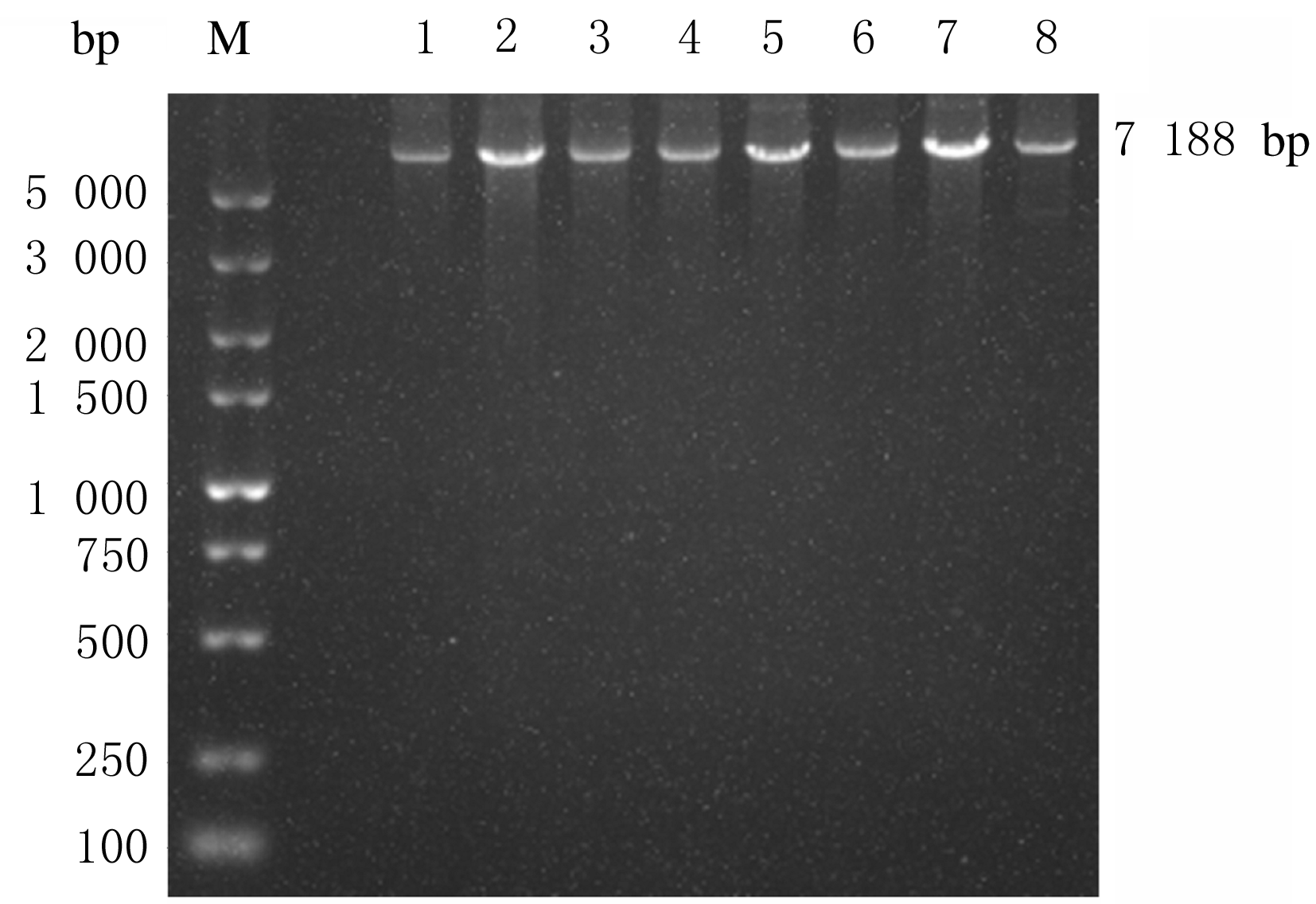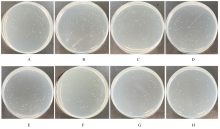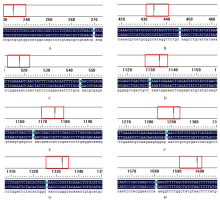| 1 | SIEGEL R L, MILLER K D, FEDEWA S A, et al. Colorectal cancer statistics, 2017[J]. CA Cancer J Clin, 2017, 67(3): 177-193. |
| 2 | WILSON C, FLIGHT I, ZAJAC I T, et al. Web-based communication strategies designed to improve intention to minimize risk for colorectal cancer: randomized controlled trial[J]. JMIR Cancer, 2018, 4(1): e2-e9. |
| 3 | ZHU G W, CHENG Z B, HUANG Y J, et al. TRAF6 promotes the progression and growth of colorectal cancer through nuclear shuttle regulation NF-kB/c-Jun signaling pathway[J]. Life Sci, 2019, 235: 116831. |
| 4 | HA H, HAN D, CHOI Y. TRAF-mediated TNFR-family signaling[J]. Curr Protoc Immunol, 2009, Chapter 11: Unit11.9D. |
| 5 | CAO Z, XIONG J, TAKEUCHI M, et al. TRAF6 is a signal transducer for interleukin-1[J]. Nature, 1996, 383(6599): 443-446. |
| 6 | ROTHE M, WONG S C, HENZEL W J, et al. A novel family of putative signal transducers associated with the cytoplasmic domain of the 75 kDa tumor necrosis factor receptor[J]. Cell, 1994, 78(4): 681-692. |
| 7 | ISHIDA T, MIZUSHIMA S I, AZUMA S, et al. Identification of TRAF6, a novel tumor necrosis factor receptor-associated factor protein that mediates signaling from an amino-terminal domain of the CD40 cytoplasmic region[J]. J Biol Chem, 1996, 271(46): 28745-28748. |
| 8 | 李 妙, 周立军. TRAF6与肿瘤关系的研究进展[J]. 生物技术通报, 2017, 33(6): 24-31. |
| 9 | SUN H, LI X B, FAN L, et al. TRAF6 is upregulated in colon cancer and promotes proliferation of colon cancer cells[J]. Int J Biochem Cell Biol, 2014, 53: 195-201. |
| 10 | DENG L, WANG C, SPENCER E, et al. Activation of the IkappaB kinase complex by TRAF6 requires a dimeric ubiquitin-conjugating enzyme complex and a unique polyubiquitin chain[J]. Cell, 2000, 103(2): 351-361. |
| 11 | SHI J H, SUN S C. Tumor necrosis factor receptor-associated factor regulation of nuclear factor κB and mitogen-activated protein kinase pathways[J]. Front Immunol, 2018, 9: 1849. |
| 12 | SHEN H Y, LI L P, YANG S J, et al. Regulatory role of tumor necrosis factor receptor-associated factor 6 in breast cancer by activating the protein kinase B/glycogen synthase kinase 3β signaling pathway[J]. Mol Med Rep, 2017, 16(2): 2269-2273. |
| 13 | MENG Q B, ZHANG W S, XU X L, et al. The effects of TRAF6 on proliferation, apoptosis and invasion in osteosarcoma are regulated by miR-124[J]. Int J Mol Med, 2018, 41(5): 2968-2976. |
| 14 | 华 进, 程志彬, 林春霖, 等. 一种高效稳定的磷酸钙转染293T细胞方法的建立及评价[J]. 吉林大学学报(医学版), 2019, 45(5): 1177-1181,1198. |
| 15 | LIU F,KJUALTE R S.Multitasking with ubiquitin through multivalent interactions[J].Trends Biochem Sci,2010,35(6):352-360. |
| 16 | HERRMANN J, LERMAN L O, LERMAN A. Ubiquitin and ubiquitin-like proteins in protein regulation[J]. Circ Res, 2007, 100(9): 1276-1291. |
| 17 | SCHWARTZ D C, HOCHSTRASSER M. A superfamily of protein tags: ubiquitin, SUMO and related modifiers[J].Trends Biochem Sci,2003,28(6):321-328. |
| 18 | MURATANI M, TANSEY W P. How the ubiquitin-proteasome system controls transcription[J]. Nat Rev Mol Cell Biol, 2003, 4(3): 192-201. |
| 19 | MOCCIARO A, RAPE M. Emerging regulatory mechanisms in ubiquitin-dependent cell cycle control[J]. J Cell Sci, 2012, 125(Pt 2): 255-263. |
| 20 | TAN G,QIU M,CHEN L,et al.JS-K,a nitric oxide pro-drug regulates growth and apoptosis through the ubiquitin-proteasome pathway in prostate cancer cells[J].BMC Cancer,2017,17(1):367-376. |
| 21 | YANG Y, YIN X T, YANG H R, et al. Histone demethylase LSD2 Acts as an E3 ubiquitin ligase and inhibits cancer cell growth through promoting proteasomal degradation of OGT[J]. Mol Cell, 2015, 58(1): 47-59. |
| 22 | FUKUNAGA E, INOUE Y, KOMIYA S, et al. Smurf2 induces ubiquitin-dependent degradation of Smurf1 to prevent migration of breast cancer cells[J]. J Biol Chem, 2008, 283(51): 35660-35667. |
| 23 | MANSOUR M A. Ubiquitination: Friend and foe in cancer[J]. Int J Biochem Cell Biol, 2018, 101: 80-93. |
| 24 | 陈子琦. 蛋白质泛素化修饰与肿瘤的研究进展[J]. 科学咨询(科技·管理), 2020(1): 123-124. |
| 25 | HAN C J, YAN P J, HE T, et al. PHLDA1 promotes microglia-mediated neuroinflammation via regulating K63-linked ubiquitination of TRAF6[J]. Brain Behav Immun, 2020, 88: 640-653. |
| 26 | LAMOTHE B,CAMPOS A D,WEBSTER W K,et al.The RING domain and first zinc finger of TRAF6 coordinate signaling by interleukin-1, lipopolysaccharide, and RANKL[J]. J Biol Chem, 2008, 283(36): 24871-24880. |
| 27 | LOMAGA M A, YEH W C, SAROSI I, et al. TRAF6 deficiency results in osteopetrosis and defective interleukin-1, CD40, and LPS signaling[J]. Genes Dev, 1999, 13(8): 1015-1024. |
| 28 | SUN L J, DENG L, EA C K, et al. The TRAF6 ubiquitin ligase and TAK1 kinase mediate IKK activation by BCL10 and MALT1 in T lymphocytes[J]. Mol Cell, 2004, 14(3): 289-301. |
| 29 | WU H, LI X M, WANG J R, et al. NUR77 exerts a protective effect against inflammatory bowel disease by negatively regulating the TRAF6/TLR-IL-1R signalling axis[J]. J Pathol, 2016, 238(3): 457-469. |
| 30 | WANG Y Y, TANG Y W, TENG L, et al. Association of beta-arrestin and TRAF6 negatively regulates Toll-like receptor-interleukin 1 receptor signaling[J]. Nat Immunol, 2006, 7(2): 139-147. |
| 31 | SHAO J H, DING Z R, PENG J H, et al. MiR-146a-5p promotes IL-1β-induced chondrocyte apoptosis through the TRAF6-mediated NF-kB pathway[J]. Inflamm Res, 2020, 69(6): 619-630. |
| 32 | XU C F, CHONG L, YU G, et al. MiR-574-5p alleviates sepsis-induced acute lung injury by regulating TRAF6/NF-κB pathway[J]. Trop J Pharm Res, 2020, 19(4): 676-682. |
| 33 | MENG Q C, LIANG C, HUA J, et al. A miR-146a-5p/TRAF6/NF-kB p65 axis regulates pancreatic cancer chemoresistance: functional validation and clinical significance[J]. Theranostics, 2020, 10(9): 3967-3979. |
| 34 | STARCZYNOWSKT D T W W,LOCKWOOD S,DELEHOUZ E E,al et,TRAF6is an amplified oncogene bridging the RAS and NF-kappa B pathways in human lung cancer[J].J Clin Invest,2011,121(10):4095-4105. |
 )
)
 )
)








